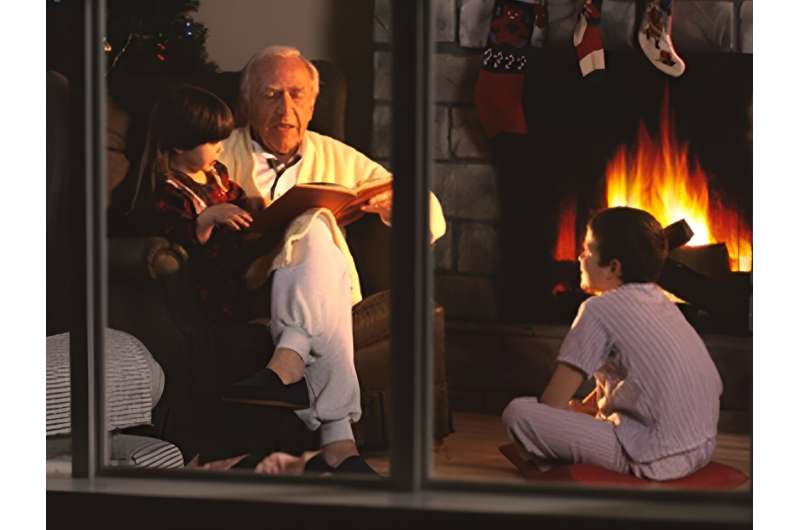This article has been reviewed according to Science X's editorial process and policies. Editors have highlighted the following attributes while ensuring the content's credibility:
fact-checked
reputable news agency
proofread
Candles, trees, pets: All holiday hazards for kids with asthma

Kids are home for the holidays, but the wonders of the season can pose problems for children with asthma.
Sources of joy like Christmas trees, a Yule log burning or Grandma's pet dog can all be unexpected asthma triggers, warns the American Lung Association.
Parents should talk with their kid's doctor about creating an asthma action plan based on their plans for the holidays, the ALA says. Such a plan could alert them to early warning signs and help them manage symptoms during a flare-up.
They also should keep the following holiday hazards in mind while crafting such a plan.
Holiday scents
Popular holiday-scented items like candles, dried potpourri, scented pine cones and cinnamon brooms all pose a similar risk to children with asthma as air fresheners do year-round, the ALA warns.
Cinnamon brooms in particular create a powerful asthma-triggering scent. Parents should refrain from hanging cinnamon brooms in their home, and instead bake cinnamon-, vanilla- or citrus-laced goodies to provide a festive aroma.
Parents who crave the ambiance of candlelight should opt for either non-scented candles or battery-operated flameless candles, the ALA adds.
Christmas decorations
A live Christmas tree might be one of the ultimate holiday traditions, but a pine tree can harbor asthma triggers like mold and pollen, the ALA warns. Even the strong smell of pine can be a trigger.
Parents should shake out a live tree prior to bringing it into the house. If possible, they should spray it down with a hose and then let it dry before hauling it inside.
Once it's set up, parents must make sure to change the water in the tree stand regularly to ward off the growth of mold.
Once the tree stops drinking and starts to dry out, parents should consider removing the tree.
An artificial tree also can pose an asthma hazard, as during storage it might have gathered dust and mold. Parents should clean the family tree thoroughly before setting it up, and keep in mind just the process of unpacking a dusty or moldy tree can cause a flare-up in their child.
If switching to an artificial tree, parents should shop for one that doesn't have fake snow on its branches, as the substances used for fake snow can be asthma irritants.
More broadly, parents should apply this advice to any holiday decorations, whether live wreaths or fake holly. Clean them thoroughly before decorating and, if artificial, store them in plastic or steel bins following the season –- cardboard boxes can be prime real-estate for mold.
Holiday travel
Heading home for the holidays can mean exposing your child to people wearing cologne or perfume, or staying in a home with pets or smoke, the ALA says.
Parents should make sure they pack their child's inhaler while traveling, take as many doses as the kid might need, and keep the inhaler in an easily accessible place.
If staying in a home, parents of an asthmatic child should ask if a pet can stay in another part of the house while they are there, and ask their kid to stay away from wood-burning fireplaces.
Parents might also ask their child's doctor whether their asthma can be pre-treated, to cut down on the risk of an asthma attack, the ALA says.
They also should be aware of the "Thanksgiving Effect," a phenomenon that occurs when you lose tolerance to your own pet after being away a few days.
More information: The American College of Allergy, Asthma and Immunology has more about holiday asthma tips.
Copyright © 2023 HealthDay. All rights reserved.




















